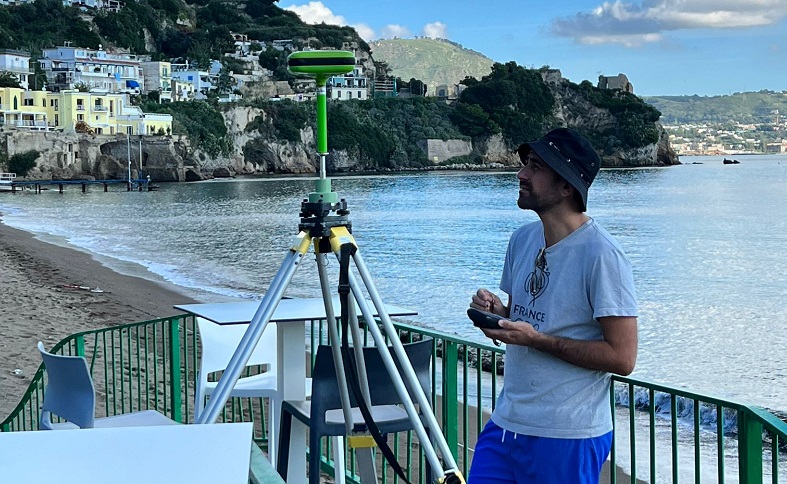Geophysical methods to investigate and reconstruct an onshore-offshore hidden built environment
In the framework of the second Iperion HS call for application, the project Integrating on-land and very shallow marine geophysical investigations to detect buried archaeological features in the Roman site of Baiae (Phlegrean Fields Archaeological Park, Naples, Italy) aims to combine land-based and ultra-shallow marine geophysical methods to investigate and reconstruct the onshore-offshore hidden built environment in a selected coastal area of the Roman site of Baiae (Naples, Italy). The remains are mainly related to an initial military complex, later converted to commercial, villas, and several thermal complexes. The entire archaeological area was mapped under multiannual underwater surveys and, more recently, with marine geophysical investigations.
The current MOLAB laboratories’ geophysical investigations aim to fill the data gap in the very shallow water and onshore environments of the submerged site of Baiae. Dynamic and static 3-D Electrical Resistivity Tomography (ERT) will examine the sedimentary layers below the seabed. At the same time, Ground Penetrating Radar (GPR) will contribute to checking the continuation of remains on the coast. The results from deeper ERT dynamic lines will be compared with the previously acquired hi-resolution seismic data to check the resolving capabilities of the different geophysical imaging methods along overlapping transects. Such an integrated approach is expected to assess and implement non-destructive geophysical methods for archaeological applications at the sea-land interface.

